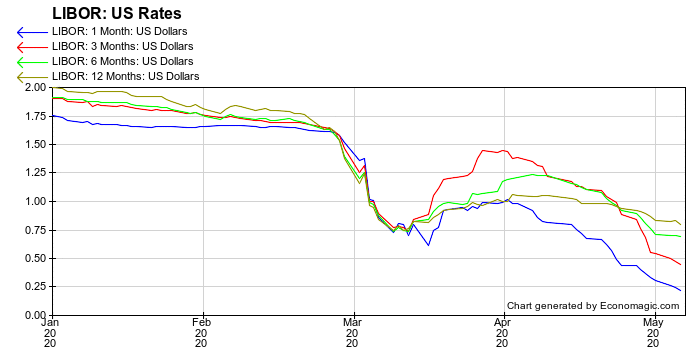Contents:


The problem with this metric is that in recent years https://1investing.in/ Technology Co-Optimization has become an important practice in technology development and track heights have become another scaling nob. From figure 4 we can see that the actual cell size is Track Height x MMP x CPP. GlobalFoundries was first spun out into its own company following a deal between AMD and an investment firm linked to the crown prince of Abu Dhabi to buy the former’s manufacturing arm. AMD was struggling at the time, thanks to pressure from Intel no less, and its CEO had decided that a fabless approach would save it heaps of money in the long-run and deliver a sudden influx of much needed cash into the business right away. Fab 9, located in the village of Essex Junction, Vermont, United States, near Vermont’s largest city of Burlington, became part of GlobalFoundries operations with the acquisition of IBM Microelectronics.
- AMD can now procure chips from other foundries as it so wishes, although a key stipulation in the WSA says it must purchase at least $1.6B worth of chips from the fab by 2024 or else incur a fine, payable to GlobalFoundries.
- The cost of doing the deal to shareholders maybe $20B premium but the cost of not doing anything is likely much worse.
- Considering the situation Intel finds itself in, GlobalFoundries acquisition may be a bitter pill that Intel investors need to swallow.
- Accountants and lawyers will argue over this, and a jury will decide.
- At the time of the announcement, GlobalFoundries CEO Thomas Caufield said the full effect of this increase in production would be seen in two to three years.
- Investors seem to like the idea of combining these two companies, with Intel stock up 1.59% as of publication.
Intel has announced a desire to compete head-on in the foundry business with TSMC and Samsung but industry experts have openly worried that the Intel “culture” made such an effort very difficult , if not impossible. Intel technologies may require enabled hardware, software or service activation. // Intel is committed to respecting human rights and avoiding complicity in human rights abuses.
Possible Intel deal
If an acquisition of GlobalFoundries is in the cards, we’re sure to learn more at this event. In 2019, Intel bought the AI chip startup Habana Labs for $2 billion and analysts say that if it were to go on a buying spree now, it would likely acquire other startups working on artificial intelligence. In particular, it would potentially be interested in firms that could boost its capabilities in training AI algorithms and helping them “learn.”
Politically, GlobalFoundries presence in the US and Europe where Intel is lobbying for subsidies is a huge plus. On the upside, GlobalFoundries does offer Intel the foundry infrastructure it really needs. The Company’s global footprint is highly favorable to Intel in the context of current geopolitics.

On August 15, 2019, GlobalFoundries announced a multi-year supply agreement with Toppan Photomasks. The agreement included Toppan acquiring GlobalFoundries’ Burlington photomask facility. Seems like it is more about gaining a contract manufacturing biz than some fabs. Assuming Intel ever gets its own 10nm processes going, they could then sell them like tsmc does. I think the 10nm processes require such large volumes to be profitable that Intel chips cannot support alone and they are going to need 3rd party parts running thru their fabs.
GlobalFoundries CEO responds
This results in a shorter interconnect length and smaller module area. Our discussions shed light on how technology is transforming many facets of our life, from business to society to culture. AIM discovers new ideas and breakthroughs that create new relationships, new industries, and new ways of thinking.
Exclusive: Italy, Intel close to $5 billion deal for chip factory – Reuters
Exclusive: Italy, Intel close to $5 billion deal for chip factory.
Posted: Thu, 04 Aug 2022 07:00:00 GMT [source]
One major amendment to the WSA allowed AMD to procure chips from other foundries for 7nm and beyond, but kept the red team leased to GlobalFoundries for 12/14nm and larger nodes. GlobalFoundries’ 22 nm FD-SOI process is second-sourced from STMicroelectronics. STMicroelectronics signed a sourcing and licensing agreement with Samsung for the same technology later. The majority investor of GlobalFoundries, Abu Dhabi’s Advanced Technology Investment Co., announced on September 6, 2009, that it has agreed to acquire Singapore-based Chartered Semiconductor Manufacturing Co. Ltd., for a total of $3.9 billion, with Chartered’s operations being folded into GlobalFoundries.
Tech Innovators – Apply Now
how to use predictive analytics: 5 steps to get started‘s expanded capacity might also enable it to manufacture new GPUs at lower prices than Nvidia and AMD — which both outsource their GPU production to Samsung and TSMC. Until then, Intel and GlobalFoundries could continue receiving orders for less advanced chips. That expansion could impact TSMC’s orders for older chips , which still accounted for 59% of its revenue last year, as well as UMC’s entire business.

In 2009, it acquired Singapore’s Chartered Semiconductor, and in 2014 it acquired IBM Microelectronics. IBM paid GF $1.5 billion to take its fab in Essex Junction, Vermont, off its hands, with the understanding that GF would continue to make chips for its servers down to 10nm, and possibly beyond. Intel’s manufacturing future looked murky under CEO Bob Swan last year. But under Pat Gelsinger, the engineering veteran who replaced Swan earlier this year, it looks much clearer.
Newsletter Signup
In 2018, the company installed two extreme ultraviolet lithography machines in a drive to produce 7-nanometer chips, then the industry’s most advanced. However, company executives calculated that they would never be profitable if they continued chasing Moore’s Law and abandoned the project. The Wall Street Journal has caught wind of a potential deal for Intel to buy Globalfoundries for $30 billion, and one that Globalfoundries itself might not even be aware of. Intel’s interest in boosting its chip production is so central to its plans that another report in July said the company could spend an additional $20 billion to alsobuild two chip fabs in Europeif it can get government subsidies. The July 14 storyby Data Centre Dynamicssaid the company is eyeing countries including Germany, the Netherlands, France and Belgium, with the possibility of spending some $100 billion on chip plants in Europe over the next several decades.
- GlobalFoundries is a worldwide chip manufacturing concern based in the U.S.
- President Joe Biden’s administration, which has become more hostile to transformative mergers, the sources added.
- GlobalFoundries’ 22 nm FD-SOI process is second-sourced from STMicroelectronics.
- Moreover, GF offers the highest industry, customer and government criteria for secure manufacturing, worldwide, through its GF Shield program.
- The big difference here is that GF requires dummy gates at the edge of the cell and Intel doesn’t and that gives Intel a big advantage in the scan flip flop area.
All the threshold voltages for this technology are set by using different work function metals. Intel did not discuss EUV during this talk but did present a paper on EUV at the conference. Intel has 4 EUV tools that they are using for development and they have said they have an optical solution for their 7nm process but will use EUV if it is ready. The process is described in the paper as having 12 interconnect layers but has 13 if you include M0 and both top metals in the table. Since then, EDA tools have improved, foundries have found their footing, and scores of fabless startups that couldn’t afford their own fab entered the market. Seventeen years after Sanders slammed his competitors during a panel discussion, AMD spun off its fab operations to create GlobalFoundries.
In September 2016, GlobalFoundries announced it would make a multibillion-dollar investment to refit Fab 8 to produce 7 nm FinFET parts starting in the second half of 2018. The process was planned to initially use deep ultraviolet lithography, and eventually transition to extreme ultraviolet lithography. The moves are meant to help resolve ongoing U.S. semiconductor supply chain shortages.
But from a business perspective, what would have seemed unthinkable a year or two ago is suddenly within the realm of possibility. And from the U.S. government’s perspective, the company that benefited handsomely from the 1956 consent decree with IBM now may be in a very good position to repay the favor. Dig deeper into semiconductor history and you encounter more irony. Intel ‘s emergence as a microprocessor giant stems in part from the U.S. Department of Justice’s efforts to prosecute IBM in the mid-1950s, culminating in a 1956 monopoly-busting consent decree.
“The intense R&D, the need to move to modern and leading-edge nodes, the massive capital investments required, we just simply view that smaller players simply won’t be able to keep up and foundries without leading-edge capabilities will be left behind.” To be sure, GlobalFoundries no longer operates at the high end of the market with cutting-edge process technologies. Only TSMC , Intel, and Samsung operate at process technology at and beyond 7nm. In terms of Intel’s ability to address the high-end of the market, and in terms of offering tough competition to TSMC, Samsung would make a much better target for Intel than GlobalFoundries. However, Samsung may not be open to this option or may want a bigger piece of the action than Intel is willing to give. With Intel offering foundry processes and GF, Samung and TSMC all offering leading edge processes the industry now has four viable leading edge process options.
At the time of the announcement, GlobalFoundries CEO Thomas Caufield said the full effect of this increase in production would be seen in two to three years. GlobalFoundries, which is looking at a potential listing later in the year, has two chip factories in Singapore, two 300 millimeter fabs in Germany, and one 200 millimeter fab and two 300 millimeter fabs in the US. The company, like a handful of other large players, appears to be taking matters on its own too. There are talks that Intel is exploring a deal to acquire chip manufacturer GlobalFoundries Inc. for US$30 billion. Reuters reported Wednesday afternoon that GlobalFoundries sent IPO paperwork to the Securities and Exchange Commission, with plans to seek a valuation of about $25 billion, according to unnamed sources.